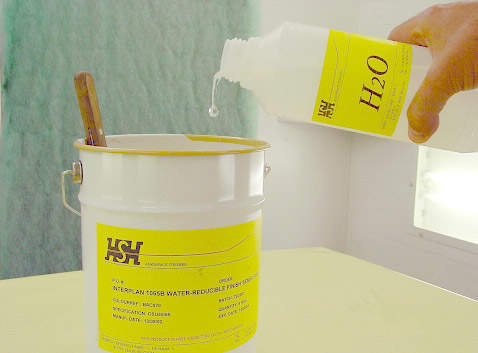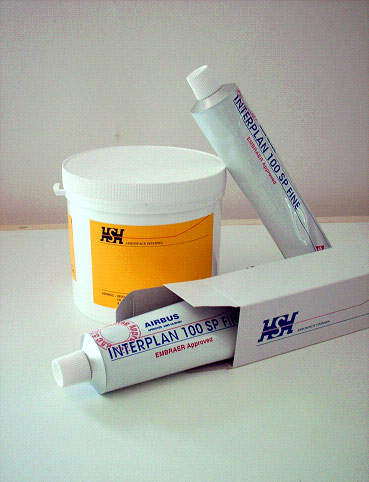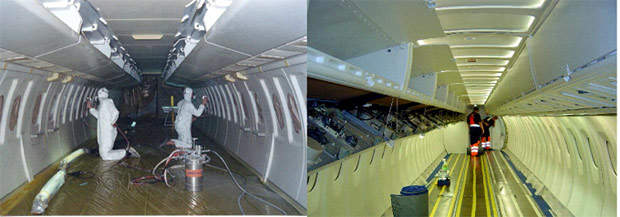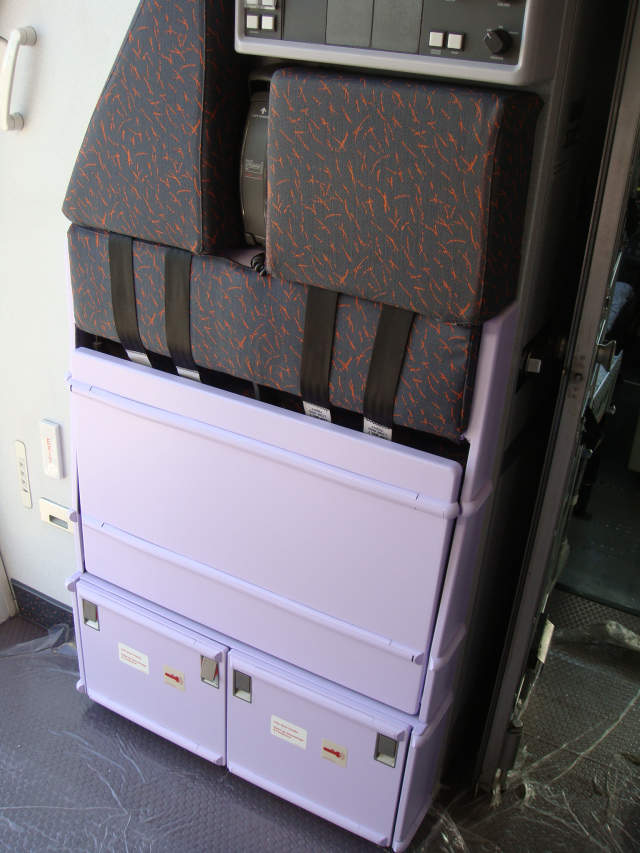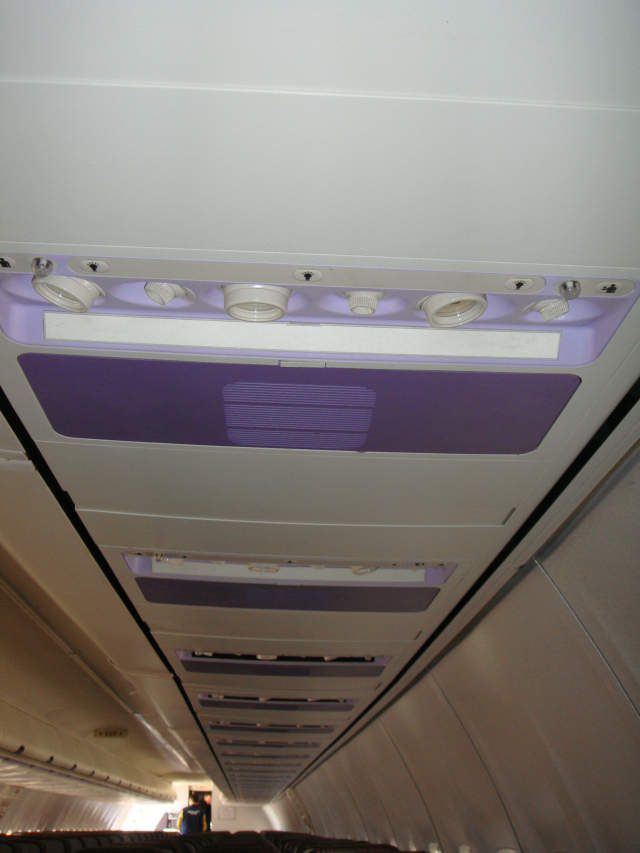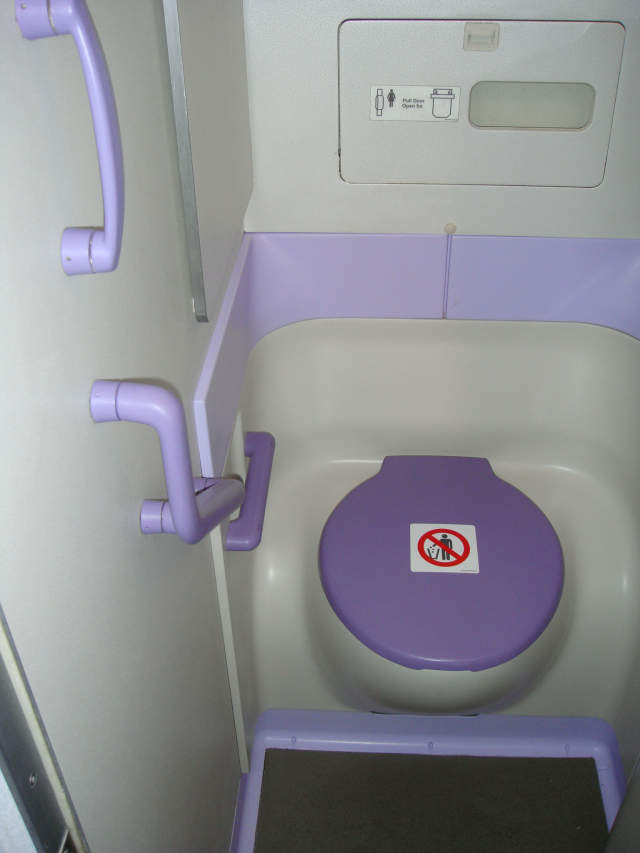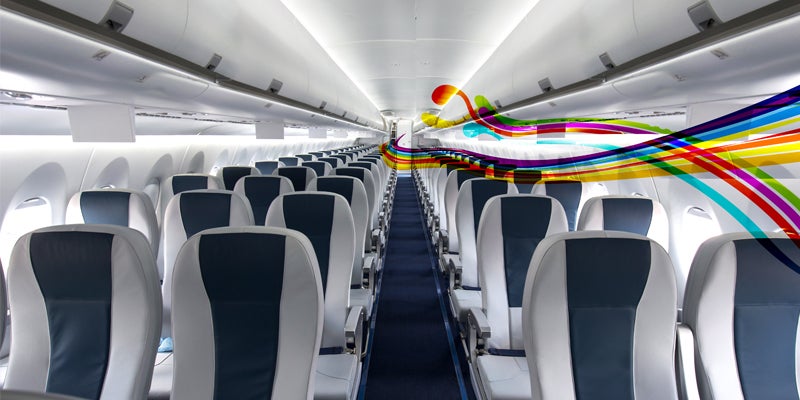
More than 30 years ago, the founder of HSH Aerospace Finishes, Hans Helsdingen, had the vision to start developing water-borne coatings for the aircraft cabin. The objectives of introducing water-borne aircraft interior coatings for the maintenance of air cabin interiors were initially determined on general health, environment and low VOC issues.
Additional features of water-borne aircraft interior coatings were emerging along with further coating modification procedures stimulated by the aircraft manufacturers’ solvent-borne coating requirements.
Eliminating solvent-borne coatings
The aim was set: eliminate solvents and meet the FAA safety regulations. However, without concessions to the excellent properties of the Boeing and Airbus approved polyurethane solvent-based coatings.
One of the most notable issues is the flammability criterion OSU 65/65, a standard adopted worldwide and one of the top screening methods for all of the materials used in air cabins.
For the first time in history, a coating that can be diluted with water is capable of competing with the traditional solvent-based paints.
Water-borne aviation coatings
The most recent HSH aircraft interior coating technology provides a virtual fire barrier coating combining all of the other OEM test criteria. For the first time in history, a water-borne coating is capable of competing with the traditional solvent-based coating system.
This is good news for the aviation industry: risk-free coating application in confined areas, very much like air cabins, versus stripping the entire infrastructure for painting is a most attractive and cost effective overhaul process, which is needed more by the industry now than at any time before.
The use of aircraft interior coatings for this purpose was almost completely banned. However, with the numerous advantages of a water-borne aircraft interior coating, this traditional industry is even turning away from the plastic decorative laminates for cost-saving reasons.
Interplan 100 SP fine pore filler
Interplan 100 Pore Filler Series is the only pore filler rewarded by all of the worlds’ major original equipment manufacturers (OEMs). Interplan 100 Pore Filler Series smoothes composites and reduces production time.
Interplan 1050 HR one-component finish for artificial leather
Interplan 1050 HF is the leading one component water borne topcoat for application on flexible substrates. Approved by Boeing it can save lots of maintenance costs by e.g. refreshing seat covers with a coating rather than replace the part.
Interplan 1000 one-component finish for thermoforming
Interplan 1000 is the most suitable coating for producing small production batches of plastic parts in a special colour.
Interplan 100 IMC one-component finish for composite manufacturing
Interplan 100 IMC is the only one in mould coating meeting all the OEM requirements. In one application the use of fillers and primers after manufacturing of a composite part is obsolete.
Interplan 1065 B one-component finish coat
Interplan 1065 B one-component finish coat is the one and only ‘classic’ and preferred MRO product of all major airlines. Interplan 1065 B one-component finish coat is currently in use in every corner and continent of the world.
Interplan 1083 two-component finish coat
HSH is your reliable partner when it comes to FAR and OEM specs. Interplan 1083 two-component finish coat is the only feasible alternative to replace traditional polyurethanes.
Interplan 1200 fire-resistant primer
Interplan 1200 fire-resistant primer is the only primer to meet the OSU 55/55 requirements (or even much lower). The fire resistant primer has high filling features due to its high solid contents.


